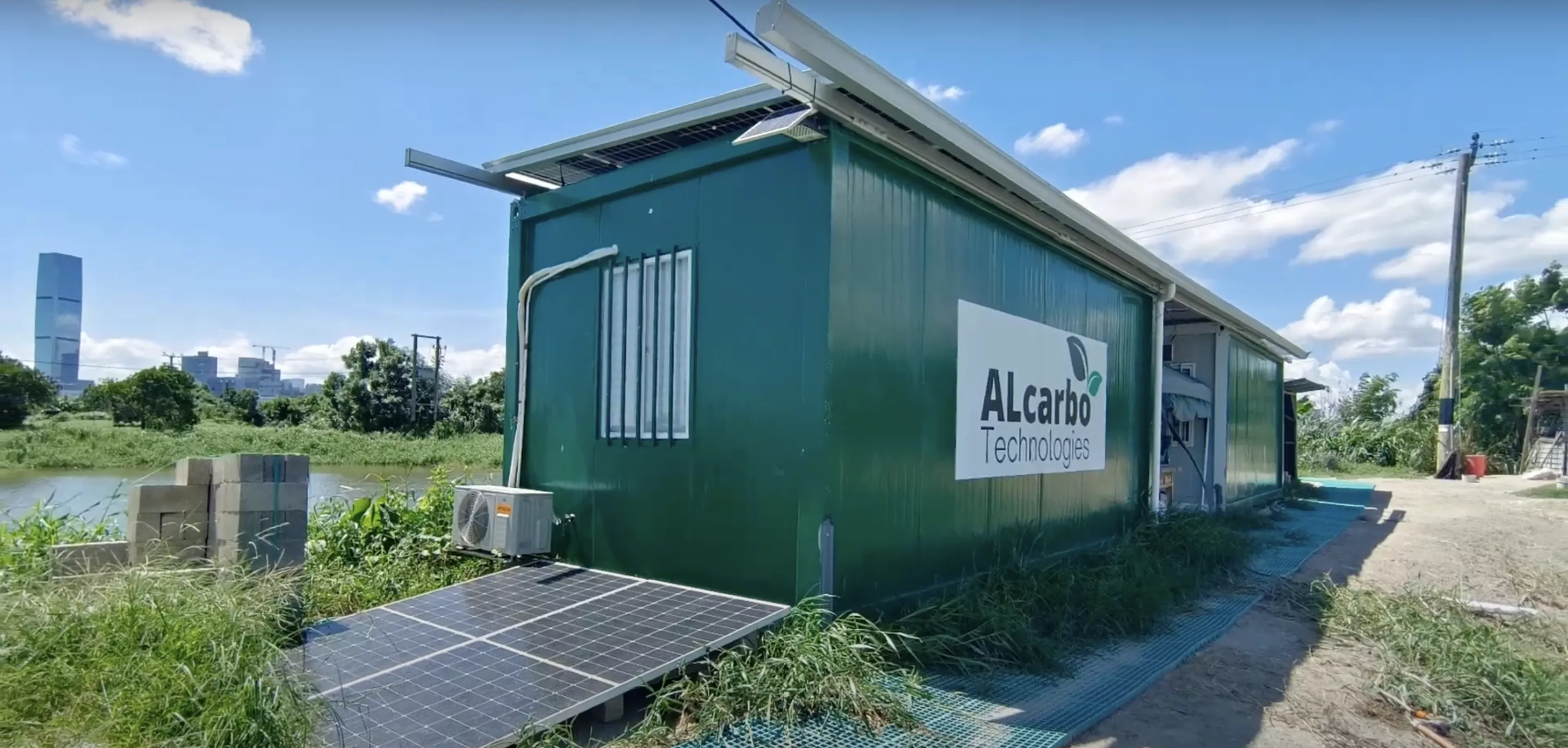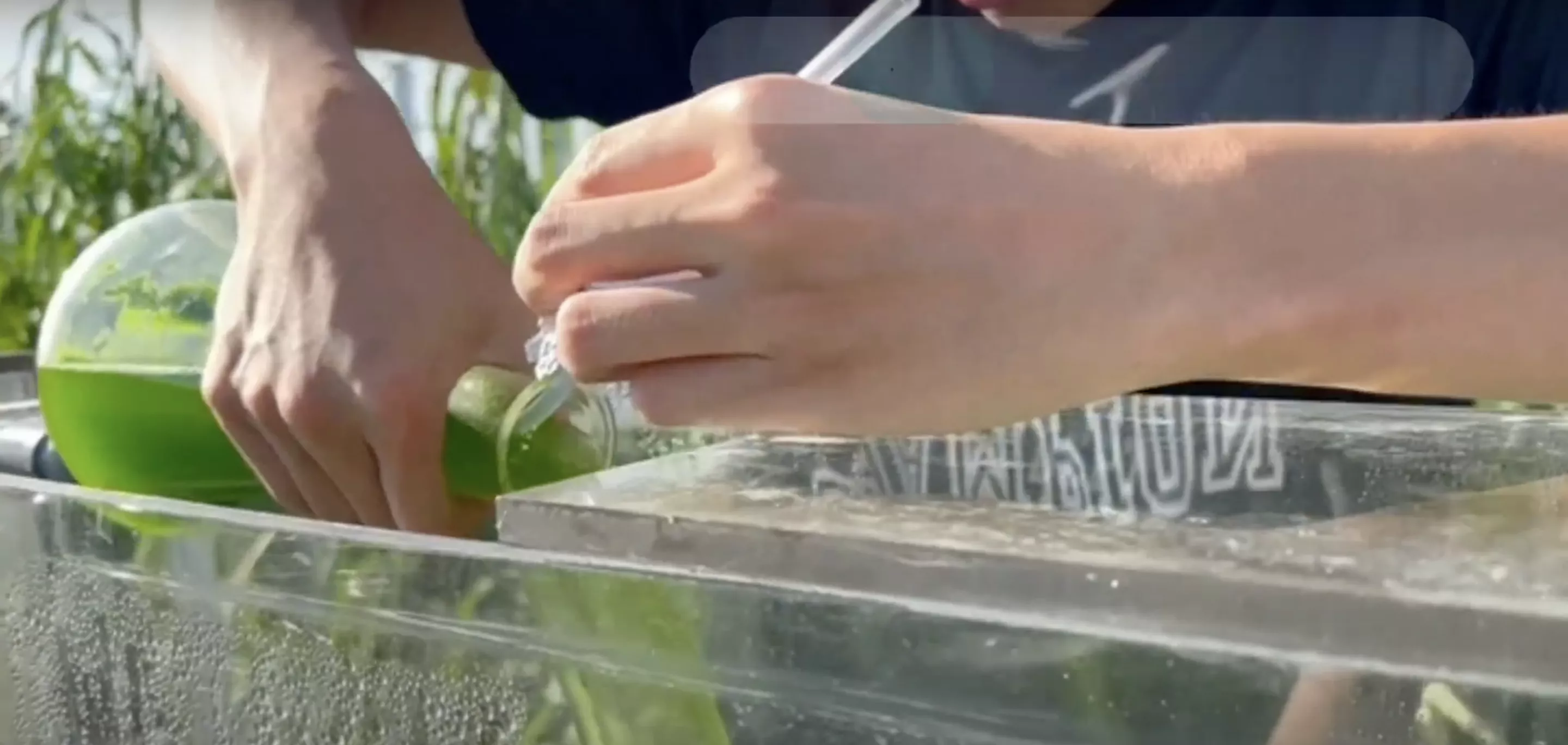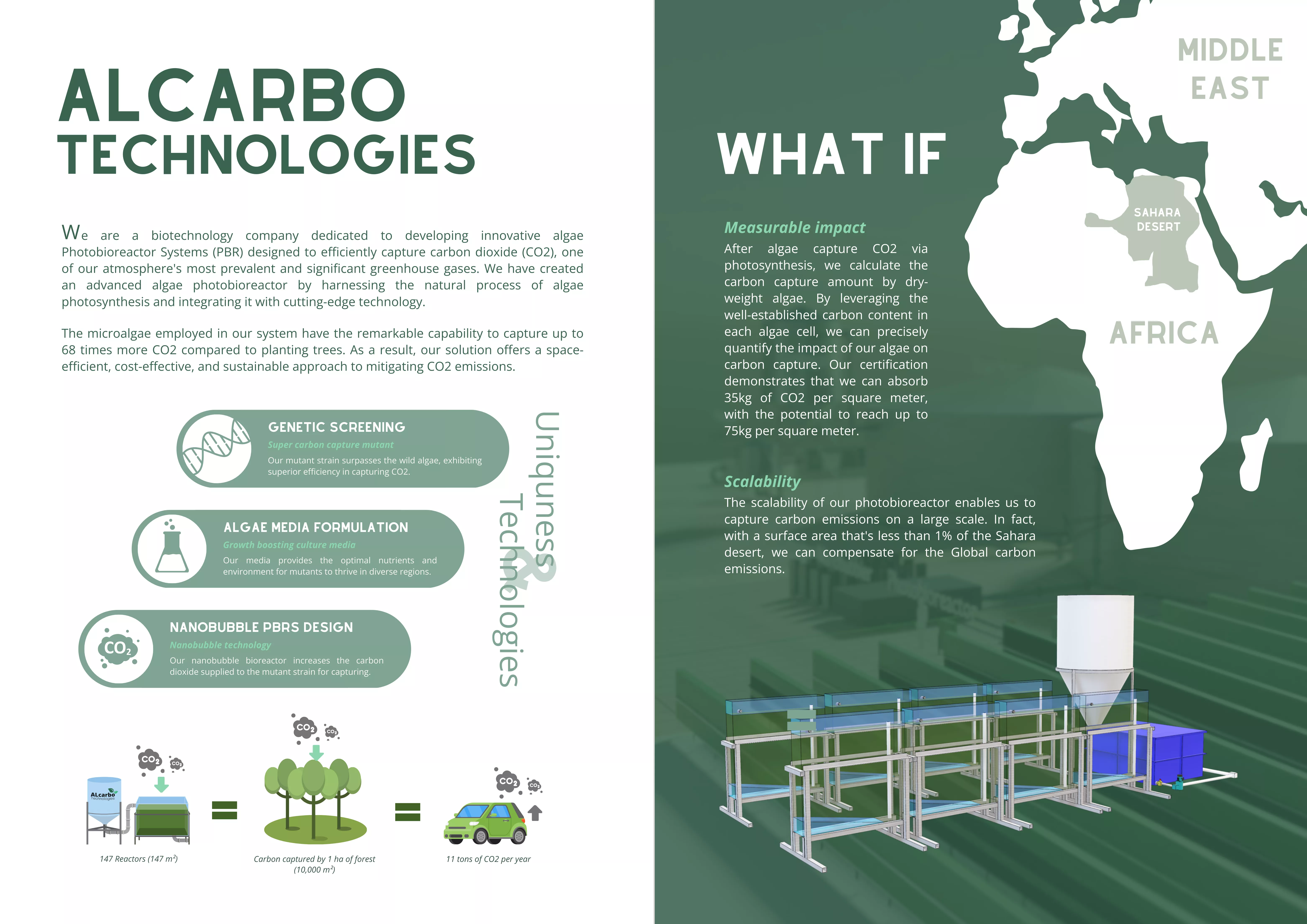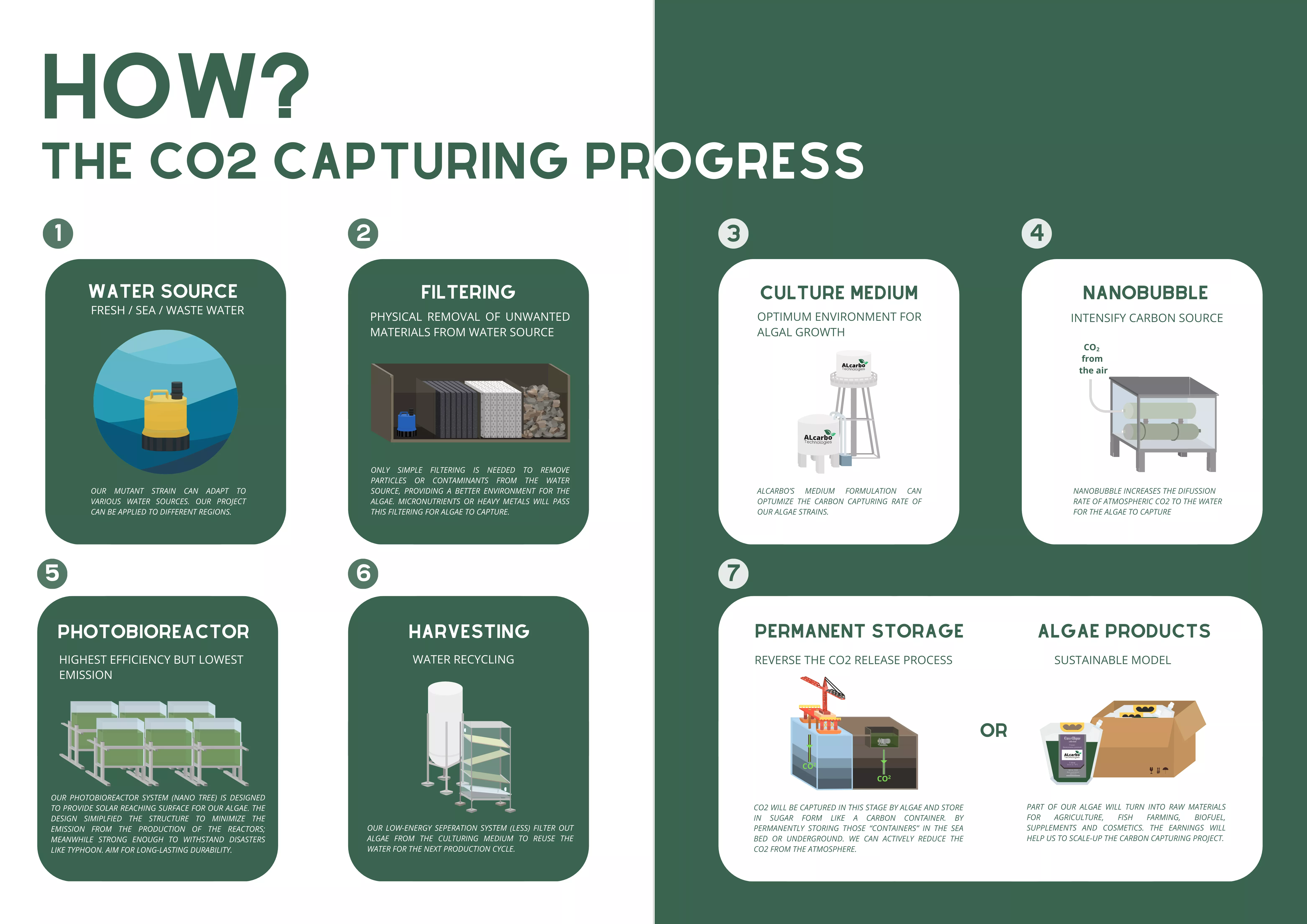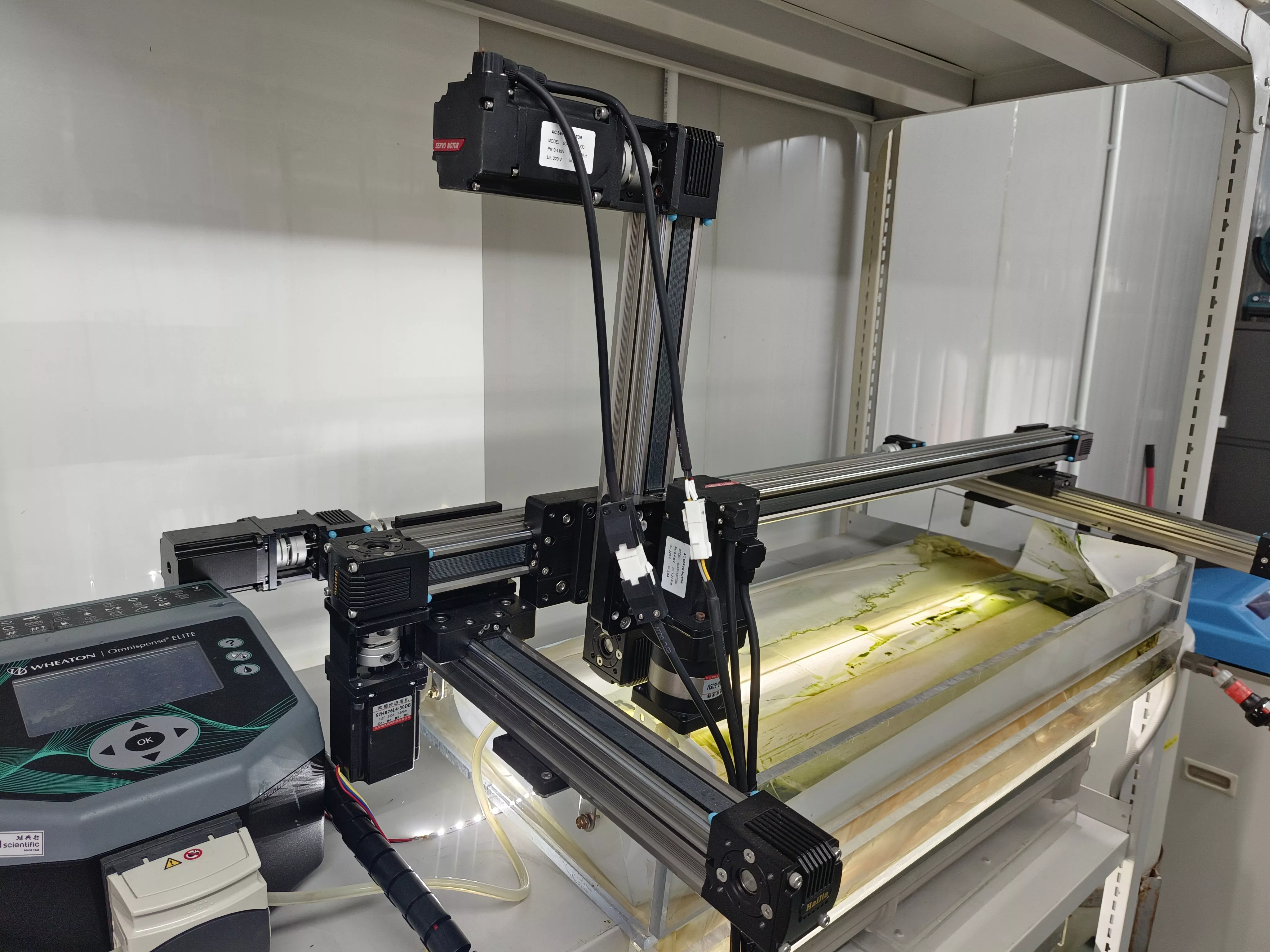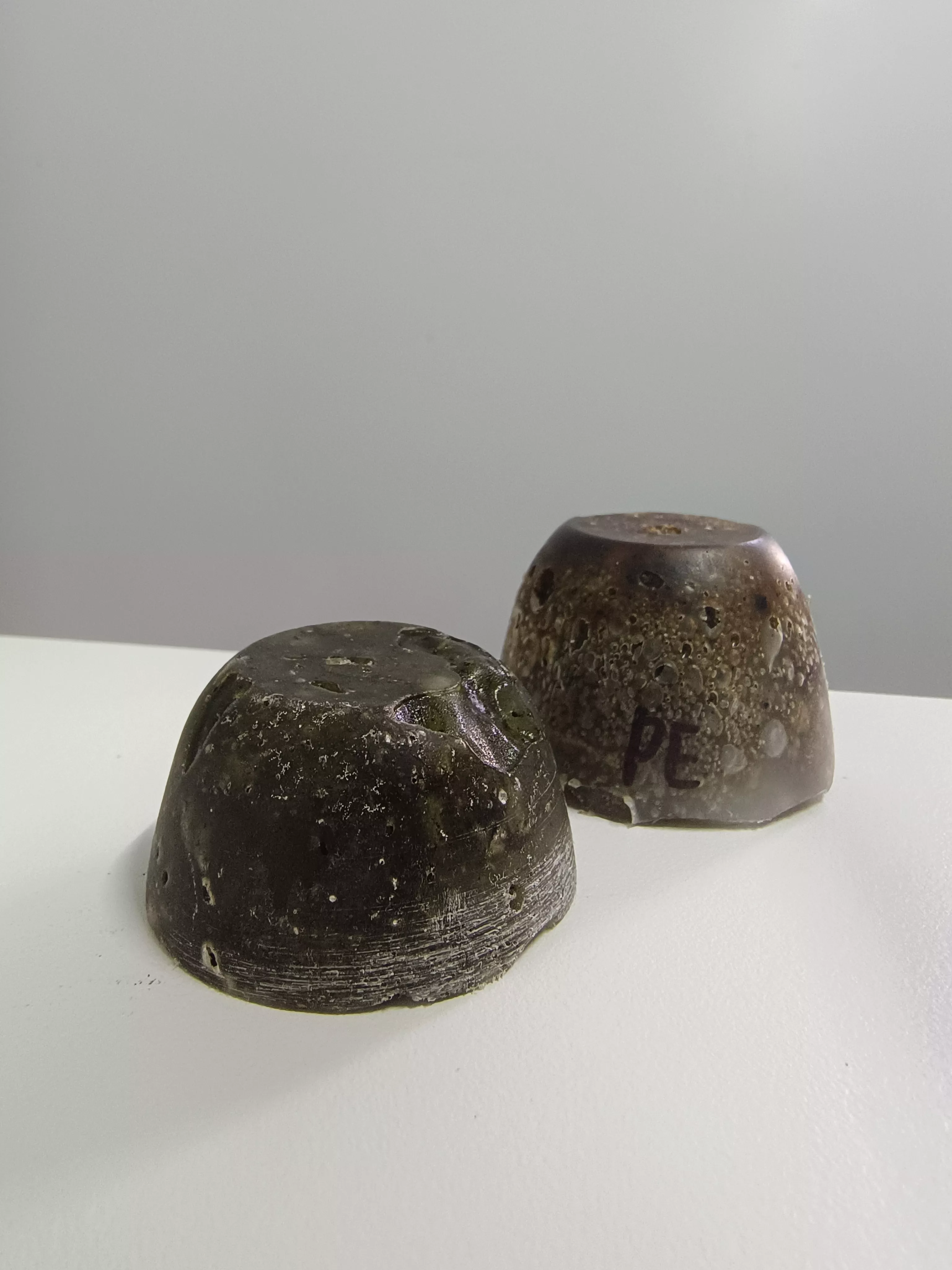Developing a Fully Automatic Photobioreactor System for Algae-based Carbon Capture solution
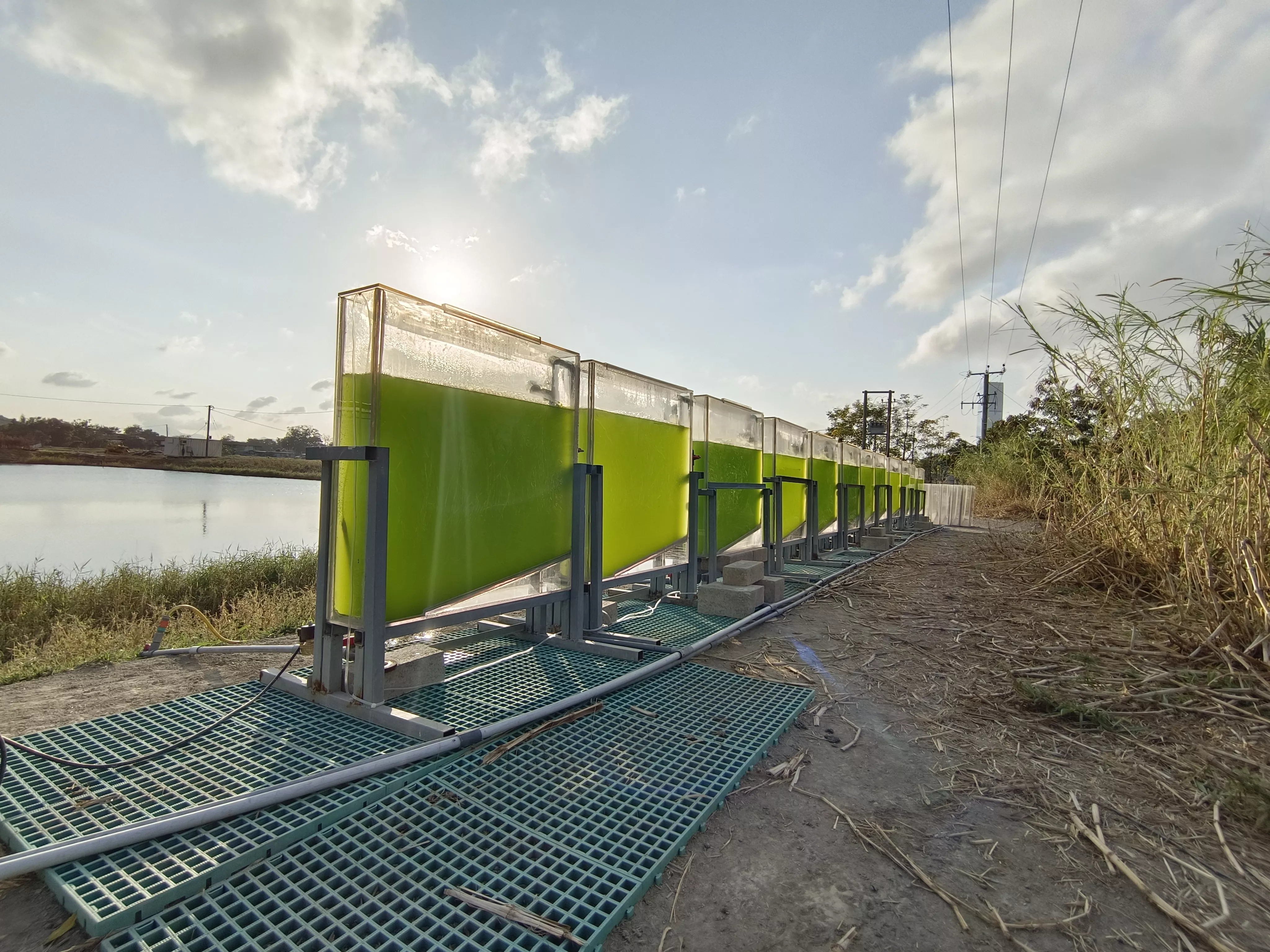
Developing a Fully Automatic Photobioreactor System for Algae-based Carbon Capture solution
This project aims to develop a fully automatic photobioreactor System that utilizes algae to capture carbon dioxide (CO2) from the atmosphere. Implementing the automatic innovative nanobubble algae photobioreactor with a Low-Energy Separation System (LESS), the primary objective and benefit of the innovation is to significantly reduce carbon footprint reduction on campus, contributing to the global effort on climate action. Additionally, the photobioreactor can be an educational tool for students, offering students practical insights into sustainable technologies, biology, and environmental science and fostering a culture of innovation and environmental awareness. This project showcases HKUST's commitment to climate change mitigation and net-zero carbon target on campus, as a 'living lab' for sustainable and smart technological advancements.
How does this project support our sustainable smart campus as a living lab vision?
The operation of the photobioreactor system operates primarily on solar energy. This minimizes carbon emissions, prompting environmentally friendly operations. The use of cutting-edge technologies that the photobioreactor involves relates to biotechnology, bioreactor engineering, monitoring systems, and automation, enabling efficient and controlled algae cultivation. By utilizing these advanced technologies, HKUST transforms the campus into a platform for experimenting, showcasing and inspiring new sustainable practices and ideas.
What's next?
The Fully Automatic Photobioreactor System is expected to be completed and operational by the end of 2025. After its installation, workshops and seminars will be conducted for HKUST students, providing valuable insights into integrating technologies and environmental conservation as sustainable solutions. With this automatic and labour-free system, the project establishes a foundation for implementing large-scale carbon reduction efforts in HKUST.
